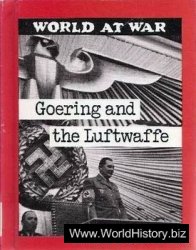Handguns are of very limited use in modern warfare. They are comparatively inaccurate, and even in the hands of a marksman are rarely effective over ranges of 40 or 50 metres and, except at close range, of little lethality due to their small calibre. Furthermore, for such a small weapon the pistol takes up considerable industrial potential and skill to manufacture. Traditionally it was also a weapon for officers and senior non-commissioned officers. Thus the carrier of a handgun was easily identified as such and a prime target for snipers. During World War I, officers soon took to carrying rifles, which quite apart from being more effective weapons, rendered them almost indistinguishable from their men. Nonetheless, handguns were issued in their hundreds of thousands in World War II and for the German armed forces demand always exceeded supply. This was because, despite the reasons listed above, the pistol continued to play an important role. For many troops, carrying a larger personal weapon such as a rifle was out of the question. In the cramped confines of a vehicle there was little space to stow anything other than a pistol, yet should the crew be forced to leave the vehicle in combat they required some sort of weapon for self-defence. This was of considerable relevance to highly motorised units such as the panzergrenadiers. It should also be remembered that in close-quarter combat such as trench clearance and urban warfare, possessing a handy and easily aimed weapon is of great benefit.
The German Army had adopted the semi-automatic pistol in favour of the revolver early in the twentieth century; therefore, unlike many other armies, the revolver had an almost minimal presence in the Wehrmacht. The famous Pistole P 08, more widely known as the huger, was adopted as the German service pistol in 1908 and served throughout World War I. It was extremely popular with the troops as it was easy to handle and aim, and usually extremely well made. Nonetheless, it was not ideally suited to trench warfare. Its complicated upward opening toggle lock mechanism was prone to clog with dirt and mud. The huger thus required considerable care and maintenance. It was also complicated and slow to manufacture. The Walther P 38 (see below) replaced it as the German service pistol in 1938. However, the huger continued in parallel production with the Walther until 1942 and gave sterling service throughout World War II.
¦ Pistole P 08
Cartridge: 9mm Parabellum; Weight (all weights given empty): 0.877kg (1.931b); Magazine capacity: 8 round box
Popular as the huger was, it was not compatible with the increased military production volume required by the German war machine. Therefore, Walther Waffenfabrik produced the excellent P 38 in response to the need for a more simply manufactured weapon. Most of the first production models went to tlie panzer arm. The P 38 incorporated some excellent safety features, such as a double action trigger which allowed the pistol to be carried securely with the safety catch off. Most importantly it was robust and well liked by the troops. This was because the pistol sat well in the hand and had a crisp, clean trigger action, all of which enhanced its accuracy. The Walther action also kept out the dirt and dust. Perhaps most importantly, it continued to function in the extremes of climate on the Eastern Front. Indeed, as temperatures dropped to such low levels that gun oil froze, the pistol could be kept free of oil and continue to function.
There were never enough of either the P 08 or P 38 available and the Germans pressed into use all sorts of pistols from a variety of manufacturers. The Walther PP and PPK,


Panzergrenadiers were also taught to use the bayonet in close-quarter fighting with the enemy.

Above: German infantry practice hand-to-hand combat with the Gewehr 98k rifle. Although based on a World War I design, the rifle was a good, sturdy weapon, and equipped many thousands of panzergrenadiers throughout the war.
And various Sauer, Steyr and Mauser models also saw service. The famous Mauser C/96 ‘Broomhandle’ pistol was used by the Waffen SS, but even in its automatic ‘Schnellfeuer’ form the C/96 was a somewhat dated and clumsy weapon. The arsenals of many of the nations conquered by the Reich were plundered to equip the Wehrmacht. Amongst the better foreign pistols used by the Germans were the 9mm Polish Radom wz.35, known in German service as the Pistole P 35(p) and the 9mm Belgium Browning Highpower, called by the Germans the Pistole P 620(b). Both were kept in production throughout the war, their output almost entirely going to the SS.
¦ Walther P 38
C. artridge: 9mm Parabellum; Weight: 0.960kg (2.151b) Magazine capacity: 8 round box




 World History
World History









